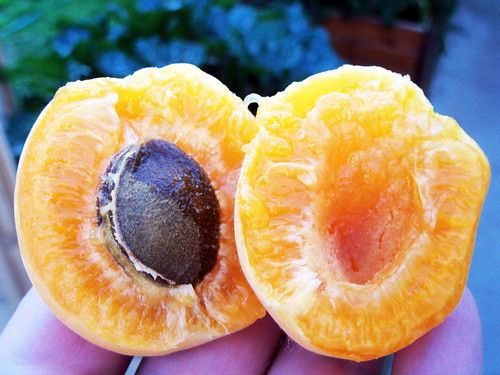Saveur de l'Abricot
Osmanthus meets goats and apricot schnapps in Artemisia's Saveur de l’Abricot. It opens with a burst of citrus and freshly-split apricot, stimulating the palate with its smooth ripe flavour. And flavour, though most don’t know it - is defined as the combination of taste, aroma (scent) and texture. Saveur de l’Abricot is mostly about the texture, and both the apricot image and ad copy on the Artemisia website are very accurate:
“Picture plucking a ripe apricot from the tree and taking a bite. Feel the velvety, golden skin on your lips. Taste the juicy tang of the flesh on your tongue. Multiple layers of ambrosial sweetness explode with earthy voluptuousness and piquant twist."
What I find most intriguing about Saveur de l’Abricot is the surprising element - the musky animalic undertones, reminiscent of herding goats and sheepskins that lurk underneath. Black current buds fruity yet animalic note also contribute to that effect (some compare it to cat-pee... I'm not one of them but I do agree it is a rather funky note when it stands alone). Seville lavender is another component - which brings to mind garrigue and the goats herding among them. Lavender absolue has more coumarin content, and also a certain velvety texture that is reminiscent of apricots, though the scent is more often compared to ripe raspberries. This adds to the overall textural theme, and brings not only sensuousness, but also a smile -
It's an aprigoat!
Top notes: Blood orange, Apricot notes
Heart notes: Osmanthus, Seville Lavender Absolute
Base notes: Black Currant Buds, Goat & Musk notes
“Picture plucking a ripe apricot from the tree and taking a bite. Feel the velvety, golden skin on your lips. Taste the juicy tang of the flesh on your tongue. Multiple layers of ambrosial sweetness explode with earthy voluptuousness and piquant twist."
What I find most intriguing about Saveur de l’Abricot is the surprising element - the musky animalic undertones, reminiscent of herding goats and sheepskins that lurk underneath. Black current buds fruity yet animalic note also contribute to that effect (some compare it to cat-pee... I'm not one of them but I do agree it is a rather funky note when it stands alone). Seville lavender is another component - which brings to mind garrigue and the goats herding among them. Lavender absolue has more coumarin content, and also a certain velvety texture that is reminiscent of apricots, though the scent is more often compared to ripe raspberries. This adds to the overall textural theme, and brings not only sensuousness, but also a smile -
It's an aprigoat!
Top notes: Blood orange, Apricot notes
Heart notes: Osmanthus, Seville Lavender Absolute
Base notes: Black Currant Buds, Goat & Musk notes






